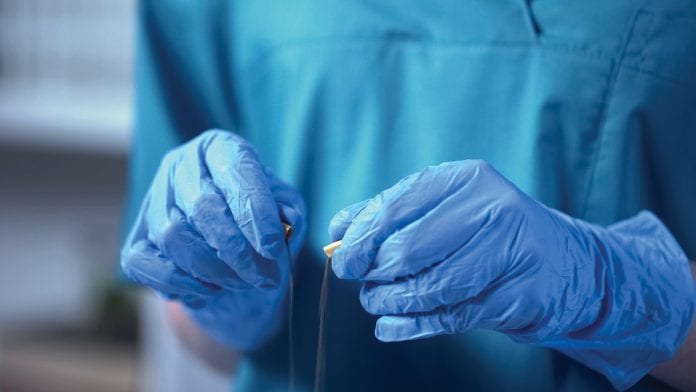
Rich Quelch, global head of marketing at Origin, explores what EU serialisation means for the pharmaceutical packaging market and how far the Falsified Medicines Directive goes.
Pharmaceuticals is one of the largest industries in the world and so is pharmaceutical packaging. Consequentially, it’s also one of the largest criminal markets believed to be worth over $200bn (~€176bn) per year. Fraudulent drug manufacturers are becoming more complex, now using digital channels to crack markets in developed countries. In response, the EU recently introduced legislation, the Falsified Medicines Directive, to make the sale and distribution of pharmaceuticals safer and the same activity harder for criminals.
What do you know about the Falsified Medicines Directive?
The Falsified Medicines Directive is now law across the EU, requiring all future pharma products to adhere to new regulations, incorporating visible tamper-proof packaging and a 2D barcode.
Each barcode consists of a unique number used to identify the batch at the production stage which is checked against once received and ‘decommissioned’ at the point of dispensing.
The database is regulated by the European Medicines Verification Organisation (EMVO) and supported by the UK Medicines Verification Organisation (UKVMO) in the UK, placing responsibility on these bodies to verify each product.
Pharma packaging companies have been key players in incorporating these barcodes in line with the new legislation, alongside developing tamper-evident features which are now compulsory.
Code data is stored in the database after the product is shipped out, and dispensaries are required to scan all new products as they’re received and dispensed to confirm the end of the product’s journey.
However, due to the recent introduction of the Falsified Medicines Directive measures, the industry is currently in somewhat of a limbo. There’s set to be a period in which pharma products already in the supply chain which don’t include the barcodes are phased out, with only 15% of existing products expected to be compliant at this point in time.
During this period, it’s likely fine-tuning will be needed in order to streamline new processes and minimise disruption across the supply chain, particularly as product-level information storage becomes the new status quo and as previously disparate networks of national bodies from 28 EEA countries learn to work together.
Seeing the opportunity
The Falsified Medicines Directive ensures complete product traceability from manufacturing to decommissioning, instead of placing the burden of authentication on any single stage of the process.
It marks an opportunity for the pharmaceutical industry to embrace stricter regulation, greatly reduce the number of fraudulent products from circulation opening-up a wider market and profit for legitimate manufacturers, and, above all else, protect patient safety.
Pharmacists, industry bodies and the healthcare industry are also set to benefit from the regulation of medicine, with less risk to the public and money spent on treating those affected by false medicine.
However, let’s not stop there. The Falsified Medicines Directive, by law, must now be followed but it shouldn’t be viewed as job done.
With tamper-proof technology and serialisation now compulsory, manufacturers have a real opportunity to build on the foundations laid by the EU Parliament to further innovate and improve health outcomes through developing the next generation of pharma packaging. For example, developing child-proof products that are also simple for elderly patients to use, or by reducing costs on anti-tamper systems and capitalising on the regulated market.
Those willing to go above and beyond the industry standard safety features are likely to reap the greatest rewards.
Let’s talk the Brexit effect
With the Falsified Medicine Directive coming into play just the month before the UK leaves the EU, doubts have been cast over how the legislation will affect UK organisations.
At the time of writing, no decision has been finalised on the UK’s leaving terms, meaning it’s difficult to qualify the extent to which pharma regulation will be disrupted.
If the UK secures a long-term deal with the EU, there’ll be little to no difference for the foreseeable future, with UK businesses expected to facilitate the new legislation like a Member State.
However, in the case of a no-deal exit, the UK supply chain will be under no obligation to exercise the terms of the Falsified Medicines Directive. The UK government has already rejected a proposal for funding for the necessary equipment, including scanners which could cost companies up to £4,000 (~€4,596) every few years to support.
This would also leave UK organisations without access to the EU central database, unable to upload and store product data, and facing the same risks currently faced with fraudulent products.
However, just recently the UK pharma industry and NHS leaders welcomed the new system, hailing it as the ‘world’s best’ medicines safety system. If it works, the UK is unlikely to walk away from it in the case of a no-deal Brexit.
The Association of the British Pharmaceutical Industry (ABPI) and the BioIndustry Association (BIA) have warned that a no-deal scenario would leave the UK a significant target for fraudulent products going forward and have also suggested UK organisations should be refunded for the time and money already invested in implementing the Falsified Medicines Directive.
Along with pressure from bodies like the British Medical Association (BMA) on the government to fund the equipment required to facilitate the Falsified Medicines Directive, it’s likely the UK will see similar product regulation in some capacity, whether through the EU directive or not.
If anything, leaving the EU could mean the UK government places even greater responsibility on the pharmaceutical industry to protect patients from falsified medicine and become a world-leader in tamper-proof design. Watch this space.
Rich Quelch
Global Head of Marketing
Origin
Tweet @originpharma
www.originltd.com
Please note, this article will appear in issue 9 of Health Europa Quarterly, which will be available to read in April 2019.

























